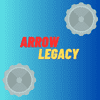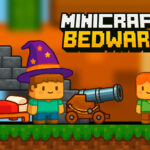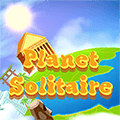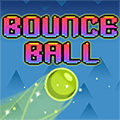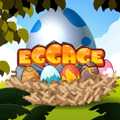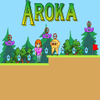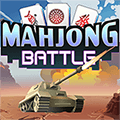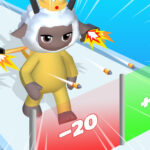How Disneyland wrote a video game rulebook
Blog Andrew Joseph 22 Nov , 2025 0

The name “Disney” has been popping up in a lot of gaming-related headlines lately. As part of an arms race with Netflix, the group announced plans Adding AI-powered user-generated content and “game-like features” to Disney+. Last year, it acquired a stake in Epic Games for $1.5 billion, adding another cash cow to its portfolio. The deal paves the way for Disneyland Game Rush, a Fortnite island released earlier this month to celebrate the theme park's 70th birthday and include Well-received mini-game Based on Space Mountain, Haunted Mansion and other iconic rides.
These developments are surprising, especially since it's been nearly a decade since Disney halted its own internal game plans. Disney Interactive Studios, best remembered for its work with Square on Kingdom Hearts and the 1989 NES DuckTales platformer that inspired the bouncing mechanic in Shovel Knight, closed in 2016 after its flagship project Disney Infinity was cancelled. When asked why, Bob Iger—who was then coming to the end of his tenure as CEO— tell shareholders While the company is good at making movies and building theme parks, they're not so good at designing games.
Others may disagree. While it's true that Disney has never been able to compete with Nintendo, Ubisoft, or Electronic Arts, its influence as a medium on gaming may be greater than those three companies combined. To understand how the company was able to leave its mark on an entertainment industry it couldn't conquer, you need to go where Fortnite has gone: Disneyland.
When Don Carson quit his job as a senior designer at Walt Disney Imagineering, the research and development group responsible for creating new rides for Disney theme parks, he filled some of his spare time playing video games. To his surprise, his new hobby reminded him of his old job so strongly that he felt compelled to write a long and in due course widely read article. Game Developer Articles (formerly Gamasutra) About what people working in one industry can learn from people working in another.
Carson's article was originally published in 2000, when 3D games like Wolfenstein, Doom, and Quake III Arena were all the rage, and the industry was on the cusp of a revolution. “The ability to create virtual worlds is relatively new to us,” reads one particularly nostalgic line. “With the growing popularity of multiplayer games and the promise of higher bandwidth, I'm excited to meet up with friends and explore these worlds together.”
Despite its age, the article's central thesis – that games and themed entertainment are “not that far away” – still rings true today, perhaps even more so than it did 25 years ago. Sure enough, the two have more in common than you might think. Both can be described as immersive experiences, where people move through a carefully constructed space that responds to their presence. What's more, both stem from the same design philosophy—which Carson boils down to this question: “How do I draw my audience into my imaginary world and make them want to stay?”
Many times, the answer points to the original Disneyland. Disappointingly, before it opened in 1955, most theme parks were weakly themed. As one of the world's leading providers of escapism, Walt Disney didn't just want to distract guests with thrills and scares, he wanted to transport them to a different reality. To sell this fantasy, Disneyland turned its rides into ships, spaceships and teacups, covered up the tracks and scaffolding, and made sure each major attraction told a story that was integrated with the rides. When you board the Coney Island Cyclone, you are you, riding the Coney Island Cyclone. But that’s not the case at Disneyland. In Jungle Cruise you are a tourist exploring the tropics. In Peter Pan's Flight, you take on the role of the eponymous character as he soars above London and Neverland. The list goes on.
Video games have followed a similar path, enhancing the original experience with increasingly immersive themes. While some of the first-ever arcade games, such as Pong and Pac-Man, were played in geometric spaces, later games mapped their gameplay loops onto more clearly defined locations and situations, from the construction sites of Donkey Kong to the roads and rivers of Frogger.
This shift repeats itself when games move to three dimensions. While much of Super Mario 64 took place in a limited space, the levels in Super Mario Sunshine, released six years later in 2002, were all part of a single, interconnected, fully realized setting: Delfino Island. Echoing the ride design of Disneyland (Tokyo Disneyland opened in 1983 and features many of the same attractions as Los Angeles), Sunlight not only fleshes out the environment but also provides a more ambitious narrative. No more saving Princess Peach from Bowser because of the game. This time, Mario is going on vacation, is framed for a crime, and must clear his name in order to be free.
Disneyland's influence on the game is most evident in the level design. To help guests find their way around the park and encourage them to explore on their own terms, Walt Disney envisioned a hub-and-spoke layout with various areas connected to a central point: Sleeping Beauty's castle. As mentioned in this article Game Developers Conference (GDC) Speech As of 2022 (covering the same ground as Carson's article), Uncle Walter refers to the castle and other tall structures scattered throughout the park as “weenies” because they lure guests from one area to another, much like he himself lures his poodles around the house with hot dog wieners.
If you're familiar with Mark Brown's popular YouTube channel Game Maker's Toolkit, you probably know that weenies have They entered the language of video game design as well as. They're especially common in the open world genre, where they help players orient themselves and guide them toward valuable content scattered across vast sandbox environments. In this sense, structures like the Big and Little Big Trees in Elden Ring are digital equivalents of Mount Kilimanjaro in Animal Kingdom or Spaceship Earth in Epcot. The Legend of Zelda: Breath of the Wild and Tears of the Kingdom are filled with mini-games of all types, from temples and Sheikah towers to mythical beasts and, of course, Hyrule Castle itself. One game that is particularly similar in outline to Disneyland is 2018's God of War, in which Midgard is set nine lakes (complete with Jormungandwini) opens up several branching paths, some of which lead to other realms.
These similarities do not mean that developing a game is functionally the same as designing an attraction or an entire theme park. Rather, every industry operates under unique constraints and pressures. Ideas for new attractions must consider factors such as safety and carrying capacity. Short ride times, large vehicles and efficient loading and unloading areas reduce wait times and enhance the guest experience. Another important difference involves user experience. While the games can be played individually, the theme park rides are suitable for larger groups. Unlike games, no two gaming experiences are exactly the same, with most attractions providing a near-identical experience for every rider every time they ride. Customization and personalization are standard features in games that are largely unavailable in attractions.
Still, while some details are different, the overall picture is completely different. Whether you work at Universal Studios or Sony Santa Monica, you face the same challenges every day: meeting financial and logistical demands without compromising the immersive quality of the final product.
This balancing act rarely succeeds without breaking something. When Disneyland opened, it was quickly discovered that the open area had quaint, narrow streets—a traditional American small town loosely based on Walt Disney World place of birth Disneyland in Marceline, Missouri, had to be expanded to accommodate the massive summer crowds: a requirement that went completely against Disney's original vision.
Likewise, Carson—who eventually went into game development himself after his career with Imagineering ended—recalls a time when he spent weeks coding realistic fire for an Indiana Jones-style game, only for his colleagues to crank up the flickering animation to unrealistic speeds. “When I complained,” he wrote, “the programmers proudly argued (…) that ‘gamers’ should appreciate high frame rate visuals, not the realism of the environment.”
If the video game industry's dependence on Disneyland theme park design was already evident during the arcade era, the relationship has only deepened over time. Back in the 90's By the late 1990s, Carson had observed that “we could access and explore increasingly dramatic and realistic worlds on computer screens”—so dramatic and realistic that on more than one occasion he “was blown to smithereens because I dared not hesitate to admire a beautiful piece of virtual architecture.” Just as Disneyland has made it almost necessary for theme parks to hide the mechanics of their attractions behind mock space stations and plywood mountains, the gaming industry has reached a point where we expect developers to mask the artificiality of their games through organic level designs, invisible walls, and hidden loading screens.
Gaming is also more similar to theme park rides, as playing games has become an increasingly social experience. The moment Carson dreamed of, soon arriving, was when you could make friends and explore the digital world just like the real world. In just a few years, online games—from browser games like Habbo Hotel to multiplayer shooters like Call of Duty and Battlefield—have become the backbone of the industry, paving the way for our current era of live services. Even a purely single-player experience is now integrated into Global network Thanks to the vibrant fan communities on Reddit, YouTube, TikTok, and other platforms.
Now, after decades of theme parks influencing gaming, that relationship appears to be reversing. While the gaming industry continues to thrive, so does the world of themed entertainment Currently struggling due to increased costs and reduced attendance. To keep up with the times, ride designers are increasingly working with and learning from game developers. From Los Angeles and Florida to Paris and Tokyo, a growing number of theme parks are adding digital, interactive, AI-assisted elements to their attractions, blending the distinction between rides and games. Smuggler's Run, Millennium Falcon Simulator at Disney's Galaxy's Edge Park, is built in Unreal Engine, and its next iteration will feature branching paths to allow players to choose. There's also Super Nintendo World's various Mario Kart attractions, where riders wear augmented reality headsets that project virtual elements onto the physical ride itself, or Disney California Adventure's Web Slingers: A Spider-Man Adventure, which uses motion-tracking technology to let riders shoot their own webs. Soon, we might see Fortnite popping up in Disneyland, not the other way around.
Tim Brinkhof is a freelance writer specializing in art and history. After studying journalism at New York University, he went on to write for Vox, Vulture, Slate, Polygon, GQ, Esquire and more.




